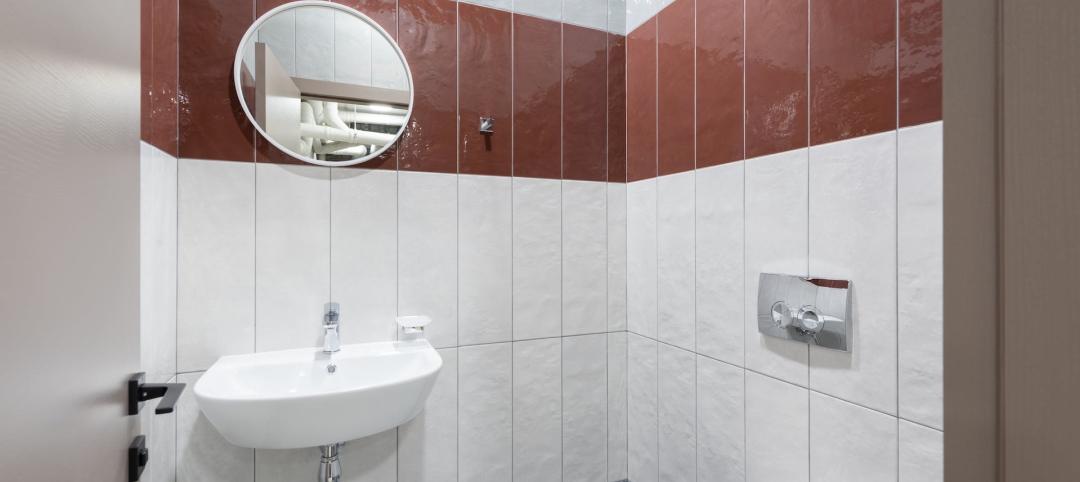In its second survey of 11.5 million units of professionally managed apartment units across the country, the National Multifamily Housing Council (NMHC) found that 84% of apartment households made a full or partial rent payment by April 12, up 15 percentage points from April 5.
NMHC’s Rent Payment Tracker numbers also examined historical numbers and found that 90% of renters made full or partial payments from April 1-12, 2019, and 91% of renters in March 1-12, 2020. The latest tracker numbers reflect a payment rate of 93% compared to the same time last month. These data encompass a
“It appears that the vast majority of apartment residents who can pay their rent are doing so ... so apartment owners can help residents who legitimately need help,” said President Doug Bibby. “Unfortunately, unemployment levels are continuing to rise and delays have been reported in getting assistance to residents, which could affect May’s rent levels."
Bibby said that, as apartment residents begin receiving the direct payments and enhanced unemployment benefits from the federal government, "we will continue to see improvements in rent payments.”
CLASS A PROPERTIES DOING BETTER ON RENT PAYMENTS THAN WORKFORCE HOUSING
“Anecdotally, we are hearing that different parts of the industry are experiencing different levels of rent payments,” said David Schwartz, NMHC Chair and CEO Chairman of Chicago-based Waterton. “As you would expect, more expensive Class A properties, whose resident base may be more able to work from home, are reporting much higher percentage of rent payments than operators of more affordable workforce
"History offers us no frame of reference for the truly unprecedented economic situation we find ourselves in,” said Bibby. "With apartment firms stepping up to support their residents by waiving late fees, creating flexible payment plans and offering other creative solutions for residents impacted by COVID-19, we expected more renters to pay later in the month than has historically been the case. The increase in this week’s number over last week’s, however, shows that apartment residents are continuing to pay rent despite the financial challenges facing them.”
The NMHC Rent Payment Tracker metric
HOW NMHC'S PAYMENT TRACKER WORKS
The NMHC Rent Payment Tracker is a cumulative data tool. Every week, the PMS providers submit two data points to NMHC: the percentage of apartment households that paid their rent for a specific time period and the total number of occupied units in their data universe (with certain exclusions). Data is submitted weekly on the following schedule: week one: from the first day of the month through COB on the 5th, week two: from the 1st through COB on the 12th , week three: from the 1st through COB on the 19th and finally from the 1st through the last day of the month, giving a monthly data point for the "percent who paid." To recap, the "percent who paid" number will increase each week, until we reach our final “percent who paid” number for the month.
Partial payments or conversions of security deposits into rent (which some property management firms are allowing) are captured once, when the first partial payment is accepted to avoid having them double counted. Subsequent partial payments are not captured in the data because the metric is “what percent of renters paid some/all of their rent” in a given month. Additional payments made by the same resident in the month would increase the total amount of rent paid, but this metric does not measure that.
The NMHC Rent Payment Tracker is powered by Entrata, MRI Software, RealPage, ResMan and Yardi. More information on the NMHC Rent Payment Tracker can be found here. Additional NMHC resources, data, and materials can be found here.
Related Stories
Student Housing | Feb 19, 2024
UC Law San Francisco’s newest building provides student housing at below-market rental rates
Located in San Francisco’s Tenderloin and Civic Center neighborhoods, UC Law SF’s newest building helps address the city’s housing crisis by providing student housing at below-market rental rates. The $282 million, 365,000-sf facility at 198 McAllister Street enables students to live on campus while also helping to regenerate the neighborhood.
MFPRO+ News | Feb 15, 2024
UL Solutions launches indoor environmental quality verification designation for building construction projects
UL Solutions recently launched UL Verified Healthy Building Mark for New Construction, an indoor environmental quality verification designation for building construction projects.
MFPRO+ News | Feb 15, 2024
Nine states pledge to transition to heat pumps for residential HVAC and water heating
Nine states have signed a joint agreement to accelerate the transition to residential building electrification by significantly expanding heat pump sales to meet heating, cooling, and water heating demand. The Memorandum of Understanding was signed by directors of environmental agencies from California, Colorado, Maine, Maryland, Massachusetts, New Jersey, New York, Oregon, and Rhode Island.
MFPRO+ News | Feb 15, 2024
Oregon, California, Maine among states enacting policies to spur construction of missing middle housing
Although the number of new apartment building units recently reached the highest point in nearly 50 years, construction of duplexes, triplexes, and other buildings of from two to nine units made up just 1% of new housing units built in 2022. A few states have recently enacted new laws to spur more construction of these missing middle housing options.
Green | Feb 15, 2024
FEMA issues guidance on funding for net zero buildings
The Federal Emergency Management Agency (FEMA) recently unveiled new guidance on additional assistance funding for net zero buildings. The funding is available for implementing net-zero energy projects with a tie to disaster recovery or mitigation.
Hospital Design Trends | Feb 14, 2024
Plans for a massive research hospital in Dallas anticipates need for child healthcare
Children’s Health and the UT Southwestern Medical Center have unveiled their plans for a new $5 billion pediatric health campus and research hospital on more than 33 acres within Dallas’ Southwestern Medical District.
K-12 Schools | Feb 13, 2024
K-12 school design trends for 2024: health, wellness, net zero energy
K-12 school sector experts are seeing “healthiness” for schools expand beyond air quality or the ease of cleaning interior surfaces. In this post-Covid era, “healthy” and “wellness” are intersecting expectations that, for many school districts, encompass the physical and mental wellbeing of students and teachers, greater access to outdoor spaces for play and learning, and the school’s connection to its community as a hub and resource.
Codes | Feb 9, 2024
Illinois releases stretch energy code for building construction
Illinois is the latest jurisdiction to release a stretch energy code that provides standards for communities to mandate more efficient building construction. St. Louis, Mo., and a few states, including California, Colorado, and Massachusetts, currently have stretch codes in place.
Market Data | Feb 7, 2024
New download: BD+C's February 2024 Market Intelligence Report
Building Design+Construction's monthly Market Intelligence Report offers a snapshot of the health of the U.S. building construction industry, including the commercial, multifamily, institutional, and industrial building sectors. This report tracks the latest metrics related to construction spending, demand for design services, contractor backlogs, and material price trends.
Retail Centers | Feb 4, 2024
‘Safe bathroom’ technology prevents fatal drug overdoses in public restrooms
‘Safe bathroom’ technology developed by a Massachusetts electrician has been proven to prevent fatal drug overdoses in public restrooms across the country. The systems use ultrasonic and infrared motion sensors connected to timers that detect slight body movements. When a system doesn’t sense motion within a set time period, it raises an alarm alerting emergency medical teams.

















